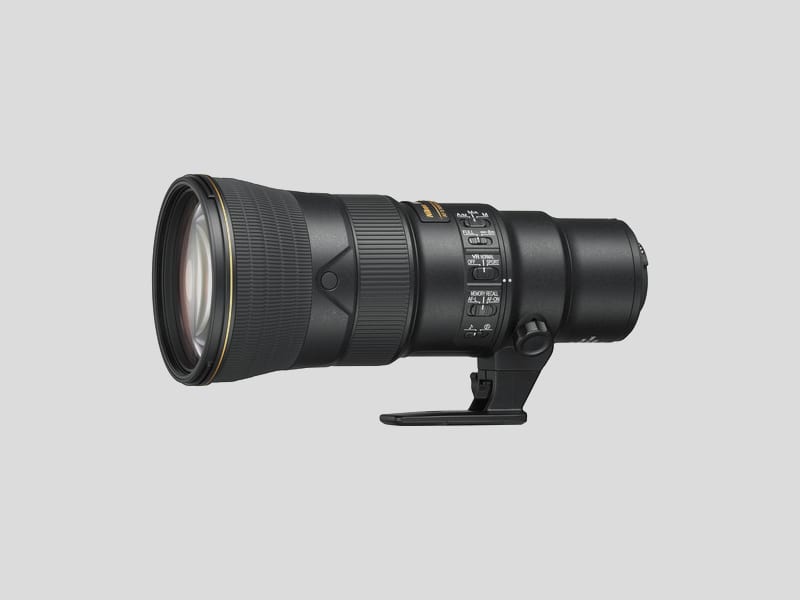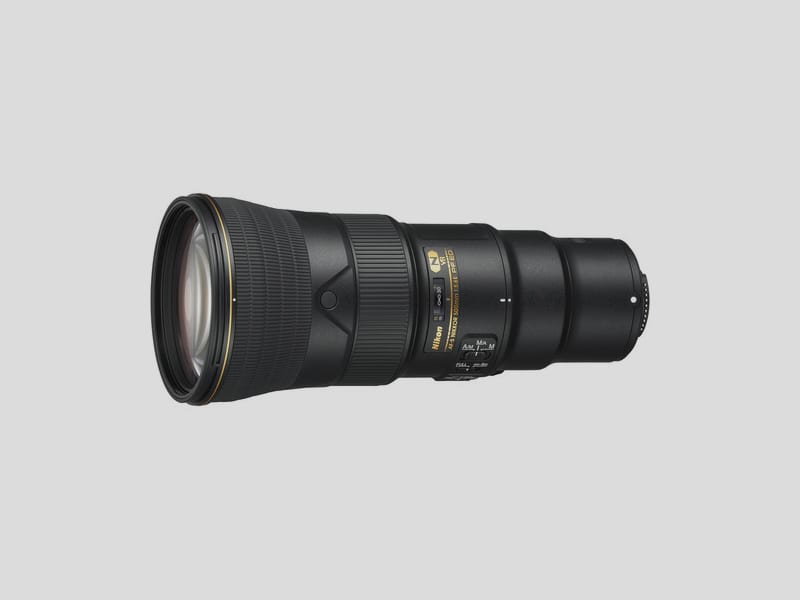Nikon AF-S NIKKOR 500mm f/5.6E PF ED VR Lens Review
The Nikon AF-S NIKKOR 500mm f/5.6E PF ED VR Lens is the smallest and lightest non-reflex 500mm lens ever made by Nikon. It is new, light weight, and incredibly built full-frame telephoto lens for Nikon DSLR cameras.
The Nikon AF-S NIKKOR 500mm f/5.6E PF ED VR features electromagnetic aperture control. This leads to the E designation in the name. The lens is available for USD 3596.95 or GBP 3699.99 currently. The optical formula comprises of 19 elements in 11 groups and a 9-bladed iris diaphragm. The lens takes 95mm filters and offers a minimum focus distance of 0.3m.
The Nikon AF-S NIKKOR 500mm f/5.6E PF ED VR is not just Nikon’s lightest lens but it is the world’s lightest lens. At 1460g, it is designed for ease of use and features a sleek, compact design. It is the latest Nikkor to combine a Phase Fresnel element with conventional refractive lens elements to deliver superior chromatic aberration compensation. The build is superb; it looks light and feels light but really easy to use. When we look at features, the Nikon AF-S NIKKOR packs a powerful punch for its size. It comes with Nikon’s Vibration Reduction (VR) technology with Normal and Sport modes. Sport Mode allows the camera to shoot at a faster frame rate to help capture fast-moving subjects. There is also a focus limiter switch with two options, Full or 8m-infinity, giving you the option of the full focus range from infinity down to the 3m minimum focus distance. Or you can pick the infinity to 8m option to help prevent focus hunting when shooting distant subjects.
The front third of the lens barrel is covered in a fixed rubber grip, and immediately behind this are four buttons. The buttons are located on the right, left, top, and bottom of the barrel. These buttons are for Focus Function and can be used to control three functions, which are determined by the Focus Function Selector switch. The three position auto manual focus switch changes the Focus Modes between M/A (autofocus with direct manual override), A/M (the same, but the focus ring needs to be rotated further before manual focusing is activated), and the third M selector position enables full manual focus.
The Nikon AF-S NIKKOR 500mm f/5.6E PF ED VR lens has a Silent Wave Motor (SWM) that promises fast and quiet auto focus operation. It is very quick and efficient for photographers in reality. But if your subject is further away, say more than 8m, then turn on the focus limiter. This avoids unnecessary hunting and speeds up focus acquisition. Manual focusing is a breeze in the NIKKOR 500mm thanks to the wide and tactile focus ring. It has a generous amount of travel between the close-focus point and the infinity setting. The front lens element does not rotate on focus, making polarisers and graduated density fillers easier to use.
Unless you really need the faster f/4 aperture offered by the AF-S NIKKOR 500mm f/4E FL ED VR, then the new f/5.6 is a great option for most photographers. It offers the same set of features but higher quality images in a lighter, smaller, more portable package. And it comes at a more affordable price. The lightness of the lens makes it super easy and comfortable to hold all day. Photographers who shoot for long hours will find it quite manageable to work with the NIKKOR 500mm f/5.6 lens. It can fit inside a backpack or a large camera bag. The size of the lens does not come at the cost of quality as we have noticed.

Sharpness is excellent even when shooting wide open at f/5.6 and remains high. It can go up to and including f/16. Geometric distortions and chromatic aberrations are kept to a minimum. Vignetting is quite pronounced at the lens’ maximum aperture. It depends on your preference, the style of photography, and what results you are expecting. For example, if corner performance is critical, and you are shooting with a high-resolution FX body, you should stop down to f/11. But in other situations, photographers should not hesitate to use this lens wide-open. The lens’ bokeh is really nice and smooth. This makes it easy to separate your subjects from your background. The inclusion of VR image stabilization greatly enhances the use of the lens in low-light situations.
All said and done, the 500mm lens will remain a specialist tool. Photographers with specific styles and needs such as wildlife or sports photographers can see its appeal. For those who need speed, the f/4 lens wins hands down. But if you are looking at cost, size, portability, and quality, then the Nikon AF-S NIKKOR 500mm f/5.6 lens is the clear winner here. Nikon has managed to shrink the lens without compromising on quality and giving it at an affordable cost.

